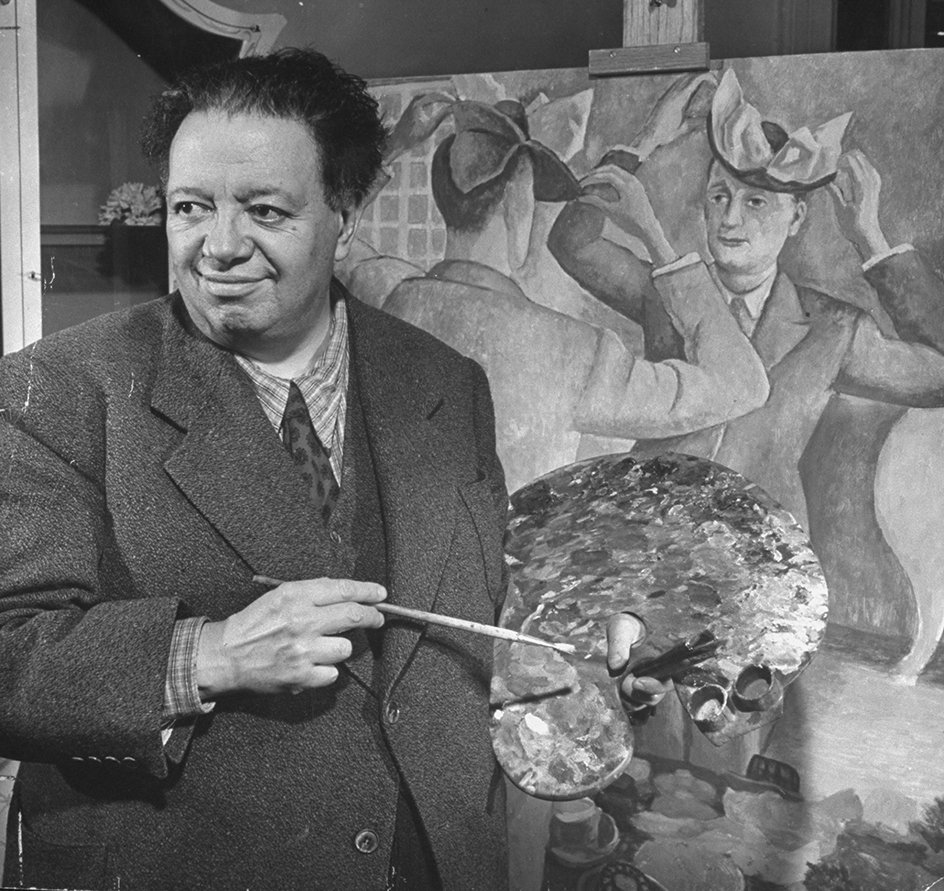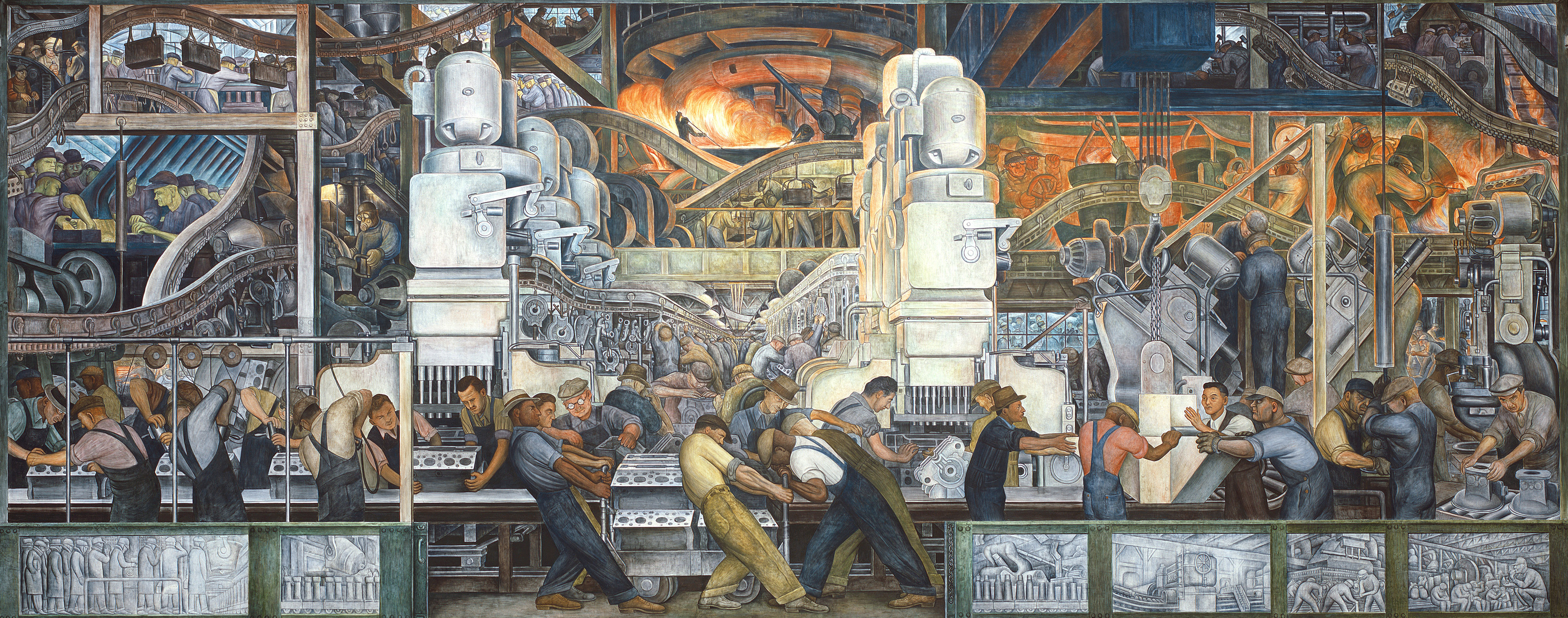Rivera, Diego (1886-1957), was a Mexican artist. He became famous for murals that portrayed Mexican life and history. Rivera was a controversial figure because of his radical political beliefs and his attacks on the church and clergy.

Rivera was born on Dec. 8, 1886, in Guanajuato. In the 1920’s, he became involved in the new Mexican mural movement. With such Mexican artists as Jose Clemente Orozco and David Siqueiros, he began to experiment with fresco painting on large walls (see Fresco ). Rivera soon developed his own style of large, simplified figures and bold colors. Many of his murals deal symbolically with Mexican society and thought after the country’s 1910 revolution. Some of Rivera’s best murals are in the National Palace in Mexico City and at the National Agricultural School in Chapingo, near Mexico City.

Rivera painted several significant works in the United States, which he visited in the early 1930’s and again in 1940. Perhaps his finest surviving United States work is a mural at the Detroit Institute of Arts. Frida Kahlo, Rivera’s wife, was also a noted Mexican painter. Rivera died on Nov. 25, 1957.
